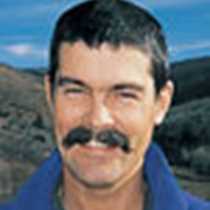Clarkston, Washington
The Sea Bird arrived this morning at a puzzling fork in the river road: the confluence of the Snake and Clearwater rivers. To the right lay Hell’s Canyon, and the tantalizing prospect of a jetboat ride up the Snake and into some of the wildest and most remote country in the Lower 48. Straight ahead lay the Clearwater country, where the Lewis and Clark expedition recovered from its starvation trek across the Lolo Trail in 1805 and where, the following spring, it spent a convivial but hungry month among the Nez Perce.
With time sufficient to pursue just one route or the other, many of our party chose to thunder up the right-hand fork in spacious aluminum jetboats. They were rewarded for their efforts with spectacular desert canyon scenery and with sightings of what William Clark called “the big-horned animal,” or bighorn sheep.
The remainder of our party ascended the left-hand fork (the Clearwater) by land in the company of Lin Laughy, an historian well-versed in the lore of both Lewis & Clark and the Nez Perce. During the morning, we followed the Corps of Discovery’s 1806 return trip route, pausing here and there on the banks of the Clearwater to gaze at verified Lewis & Clark campsites and to munch on biscotti and sip freshly ground coffee. Lewis and Clark’s party was not so well provisioned, and their friends the Nez Perce had passed a hungry winter. Nonetheless, the Nez Perce welcomed the expedition and provided food in exchange for the medical services of William Clark and for small items from the party’s diminished stock of trade goods.
After a sumptuous lunch in the small village of Kamiah, we visited a Nez Perce legend site called the Heart of the Monster. Here, we heard the Nez Perce creation story and then learned to make fire the old-fashioned way – first with friction and two sticks, and then with flint and steel. After a quick primer on how to catch a speck of molten steel on charcloth, three of our party squared off in a contest to see who could get a fire going fastest.
As we returned to the confluence of the Snake and Clearwater rivers, we followed the expedition’s outbound route, landing at the “pine bottom” where they built canoes for their descent of the Snake and Columbia river systems. Before returning to the Seabird, we rendezvoused with our jetboat compatriots for a tour of the Nez Perce National Historic Park’s interpretive center.
The Sea Bird arrived this morning at a puzzling fork in the river road: the confluence of the Snake and Clearwater rivers. To the right lay Hell’s Canyon, and the tantalizing prospect of a jetboat ride up the Snake and into some of the wildest and most remote country in the Lower 48. Straight ahead lay the Clearwater country, where the Lewis and Clark expedition recovered from its starvation trek across the Lolo Trail in 1805 and where, the following spring, it spent a convivial but hungry month among the Nez Perce.
With time sufficient to pursue just one route or the other, many of our party chose to thunder up the right-hand fork in spacious aluminum jetboats. They were rewarded for their efforts with spectacular desert canyon scenery and with sightings of what William Clark called “the big-horned animal,” or bighorn sheep.
The remainder of our party ascended the left-hand fork (the Clearwater) by land in the company of Lin Laughy, an historian well-versed in the lore of both Lewis & Clark and the Nez Perce. During the morning, we followed the Corps of Discovery’s 1806 return trip route, pausing here and there on the banks of the Clearwater to gaze at verified Lewis & Clark campsites and to munch on biscotti and sip freshly ground coffee. Lewis and Clark’s party was not so well provisioned, and their friends the Nez Perce had passed a hungry winter. Nonetheless, the Nez Perce welcomed the expedition and provided food in exchange for the medical services of William Clark and for small items from the party’s diminished stock of trade goods.
After a sumptuous lunch in the small village of Kamiah, we visited a Nez Perce legend site called the Heart of the Monster. Here, we heard the Nez Perce creation story and then learned to make fire the old-fashioned way – first with friction and two sticks, and then with flint and steel. After a quick primer on how to catch a speck of molten steel on charcloth, three of our party squared off in a contest to see who could get a fire going fastest.
As we returned to the confluence of the Snake and Clearwater rivers, we followed the expedition’s outbound route, landing at the “pine bottom” where they built canoes for their descent of the Snake and Columbia river systems. Before returning to the Seabird, we rendezvoused with our jetboat compatriots for a tour of the Nez Perce National Historic Park’s interpretive center.




